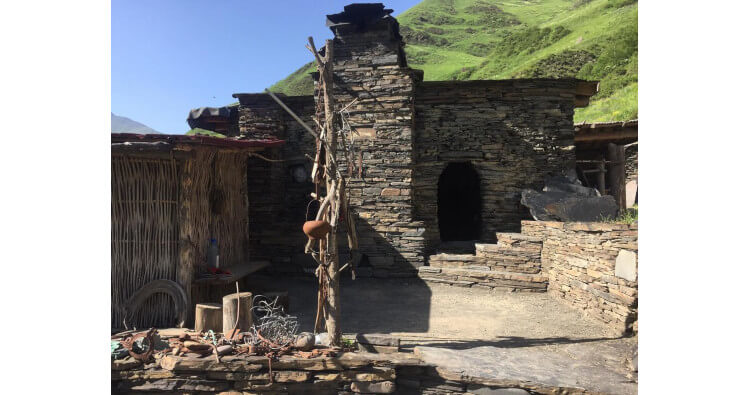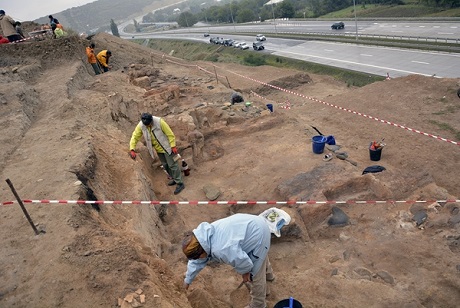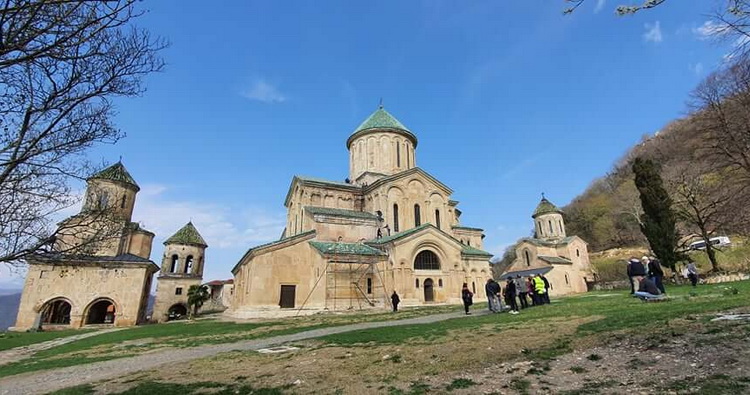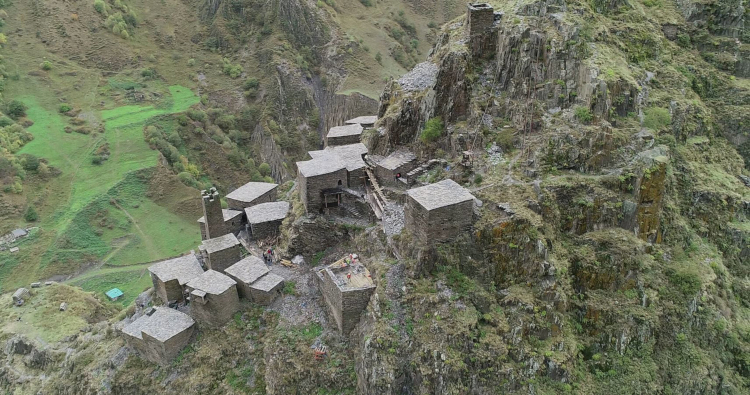Khvamli Cave Fort in Georgia's west designated national cultural heritage monument
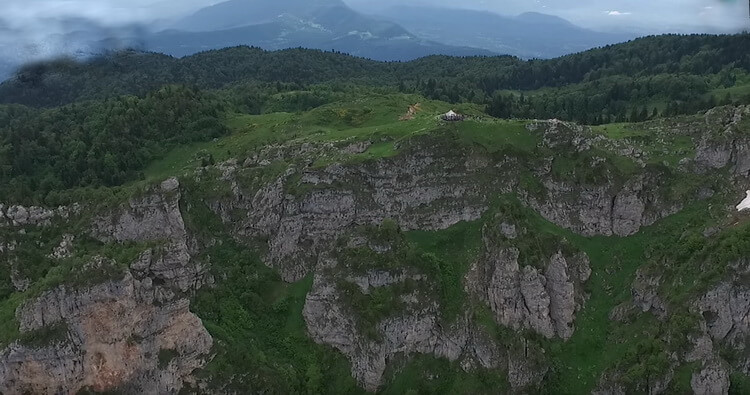
The cavernous bluff of the limestone cliff rises out of a hilly landscape in western part of the Lechkhumi province. Screenshot from a video by Discover Georgia.
The Khvamli Cave Fort, a cavernous complex of defensive fortifications in Georgia's west, used for military purposes throughout the middle ages and turned into a source of folk myths, has been designated as a national cultural heritage monument.
A decree by the government last Friday gave the designation to the semi-natural fortification, rising out of a hilly terrain with its massive limestone bluff in the Racha-Lechkhumi and Kvemo Svaneti region.
The new status means the site has a status between the basic category of "local significance" and the top category of a UNESCO World Heritage Site, in the Georgian regulations on cultural heritage protection.
Found in the western part of the Lechkhumi province, the cliff range reaches 10km in length and 7km in width and is located 2002m above sea level.
Its southern bluff is home to caves used throughout the medieval era as a makeshift defensive fort overlooking the locality, while historical notes from the 14th century CE also attribute them to have served as spots for hiding royal treasures during Mongol invasions in the previous century.
Folk legends have also used the cliffside as the setting for the mythical torture of Prometheus, or the Greek mythology figure's local counterpart Amirani.
The monument's importance was addressed last year with an infrastructural work worth over 15 million GEL ($4.88m/€4.16m) on a complete rehabilitation of an access road leading to the site.
Along with the Khvamli fort, the government decreed the Tsedisi Fort Complex in central Georgia's Gori Municipality, and the Didnauri city remains in eastern Georgia's city of Dedoplistskaro, as monuments of national importance.
 Tweet
Tweet  Share
Share

